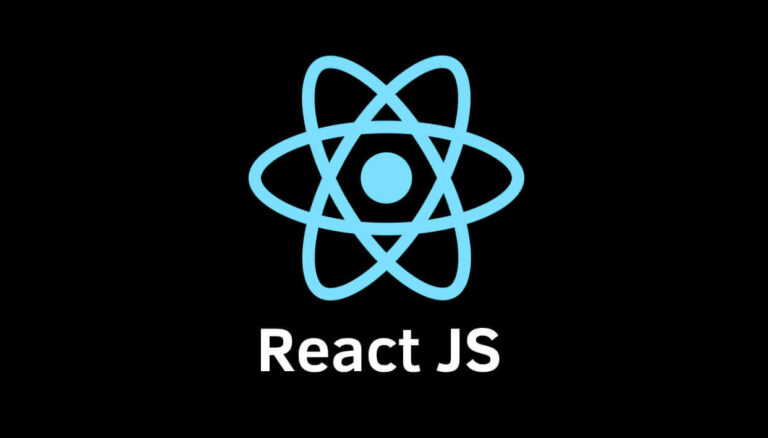Top 25 Must-know Web Developer Interview Questions & Answers

Web developers continue to be in demand as the Internet continues to grow. To land the job though, you must first scale the employer’s interview session.
Though larger teams tend to hire either front-end or back-end developers specifically, smaller teams and startups will often go for full-stack developers. So, it’s helpful to know as much as you can.
The following is a list of the top 25 must-know web developer interview questions and their answers to help you get ready.
1. What Are the Roles of HTML, JavaScript, And CSS in Web Development?
HTML stands for HyperText Markup Language and it is the standard language for developing documents to publish on the web. JavaScript and CSS are extras.
JavaScript was originally designed as a client-side programming language, it executes in the browser to produce more functionality in the webpage. CSS stands for Cascading Style Sheets and is used for presenting elements on the screen.
2. What Is Responsive Web Design
Responsive web design is a web development approach that aims to create the best experience for a user by adapting the website’s appearance based on that user’s device or environment.
The goal is for the website to look good on all devices and this entails dynamic changes that either reduce on increase box sizes and alignment based on the device’s screen size or orientation.
3. What Are The Benefits of Using A Framework?
There are many benefits to using a framework in developing a web application. The major ones are as follows:
- Easier development process with best practices.
- Faster development with starter projects saves time.
- The use of tried and tested code.
- Often provides better security.
- Saves costs, especially with larger projects.
4. What’s a JavaScript Callback?
A JavaScript callback is a function that should be executed after another function. The callback function’s name and arguments can be passed as arguments to the first function, plus the first function can also pass arguments internally to the callback function which are a result of its calculations.
Callback functions are best used with asynchronous functions that have to wait for other functions to first finish execution.
5. Explain Local Vs Global Scope in JavaScript
Defined variables are written in words and these are only meaningful in the right context. Local and global scope refers to this context of defined variables. A global variable must be defined outside a function, while local variables are defined inside a function.
Thus, a global variable has global scope, which means it can be accessed from anywhere in the program. A local variable, however, has local scope and this means that it can only get accessed from inside the function.
6. Explain Z-Index in CSS
The z-index is an element property that is used to define the element’s stack order. Stack order refers to the ability of an element to either be behind or in front of other elements just like a stack of cards.
Elements with higher stack order appear in front of elements with lower stack order. In this context, giving an element a stack order of 2 or 100 guarantees it will display on top of all others on a page. Similarly, a page without specified stack orders will stack bottom elements from the source higher than the top ones.
7. What is Marquee in HTML?
Marque is a container tag in HTML, which is used to display scrolling text. It lets you control scroll direction, as well as speed. Marquee is however deprecated in HTML5, and you are advised to use CSS instead.
Example scrolling with marquee:
<marquee width=”80%” direction=”right” height=”100px”>
Marquee scroll text
</marquee>
8. List Major Ways to Reduce Page Load Time
There are many steps that a developer can take to improve a page’s load time, the major ones are:
- Optimize images and reduce their size
- Get rid of unnecessary widgets
- Reduce lookups to a bare minimum
- Host the website on a decent host
- Use Accelerated Mobile Pages or static sites
- Lazy load images
- Minify your code
9. What Are The Differences Between Canvas & SVG?
SVG stands for Scalable Vector Graphics and the <svg> tag is a container element for creating graphics, such as a circle, a box, an ellipse, and so on. You can modify SVG using CSS or JavaScript and being scalable means it works well for high-resolution outputs.
The <canvas> container, on the other hand, is raster based and not scalable. It is also used for creating graphics but is only modifiable by JavaScript. It is more efficient at handling a larger number of objects though.
10. How Does Null Differ From Undefined?
Null is a representation of no value. It is generally used as a placement holder to initialize a defined variable that has not been assigned a real value. Undefined, on the other hand, refers to a defined variable that has not been initialized.
In JavaScript:
var variableA;
var variableB = null;
alert(variableA); //shows undefined
alert(variableB); //shows null
11. How Does ID Differ From Class?
ID and class are two methods of identifying and handling elements in an HTML document. The major difference between the two, however, is that ID must be unique. In other words, two elements cannot share the same ID, but two or more elements can share the same class.
An ID is used to handle specific elements, while a class is used to handle a group of elements that share one or more common traits.
12. How Do You Improve A Website’s Security Features?
The few steps that you can take to improve a website’s security include:
- Enforcing a strong password policy. This means checking that a selected password has over 8 characters and contains numerals, special characters, and upper- and lower-case characters.
- Use of captcha or any anti-bot measure.
- Employing 2-factor or multi-factor authentication methods such as OTPs (One-Time-Passwords) and hardware dongles, where necessary.
- Using a host with DDoS protection and automatic backup features.
13. How Does localStorage Differ From sessionStorage?
The localStorage and sessionStorage systems both let a developer store data in a web browser. However, localStoarage is persistent, while sessionStorage is not. In other words, data stored in localStorage will be available on the browser over multiple sessions, while data stored in sessionStorage gets deleted once the browser tab closes.
14. List HTTP2.0 Improvements Over HTTP 1.1
The HTTP/2 protocol got published in 2015 and offers significant improvements, such as:
- Better security using binary over text.
- Better performance.
- Lower Latency.
- Better error handling.
- Lower overhead.
15. What is the Difference Between Git Pull and Git Merge?
The git pull command lets you download content from a remote repository, then it updates your local repository with the downloaded content.
The git merge command, on the other hand, lets you combine two separately developed branches of the same project. The merge command must be performed from the branch you want to merge into, and this is usually the main branch.
16. Hows Does GET Differ From POST And PUT?
The HTML GET method is used by a browser to request information from a server, while the POST and PUT methods are used to send information from the browser to a server.
But while a POST request can simply add data to a server resource, a PUT request is used to replace the resource entirely using the request’s payload.
17. List The Most Popular Data Exchange Formats
Here are the most popular data exchange formats to date:
- XML
- YAML
- CSV
- JSON
- HTTP
- SQL
18. List The 3 Types of Popup Boxes
Popup boxes in JavaScript are used to display messages to the user, to request input, and sometimes to do both. Here are the 3 types of JavaScript popups:
- Alert Box – This displays your message plus an ‘OK’ button.
- Confirm Box – This dialogue box includes both ‘OK’ and ‘Cancel’ buttons that can affect the code.
- Prompt Box – This box includes a text input box for collecting information from the user.
19. Name the Different Ways to Include CSS Code
There are 3 ways to include CSS in an HTML document. They are:
- External CSS – You include a .css document using <link rel=”stylesheet” href=”styles.css”> inside the document’s <HEAD></HEAD> tags.
- Embedded CSS – You include the CSS code inside the <style></style> tags, anywhere in the document.
- Inline CSS – You use the style=”CSS-property: value” pair inside your HTML tags, eg. <div style=”color:blue;”>PSquare!</div>
20. How Does window.onload Differ From document.onload?
Window.onload is used to execute JavaScript code once the browser has loaded the page’s DOM tree and other basics, including images, CSS code, and scripts.
While document.onload executes immediately after the DOM is ready, this can mean even before images and external libraries are loaded.
21. How Do You Hide an Element using CSS?
You can hide an HTML element using 3 CSS methods, they are:
- Display: none; – The element is neither rendered nor displayed.
- Visibility: hidden; – The element is rendered but not displayed.
- Position: Absolute; – The element is rendered and displayed, but positioned outside the display area.
22. What Are the Best Uses For Ajax?
Ajax is a method of loading data from a server in the background using JavaScript. It has lots of uses, such as data validation, chat apps, comments, data filtering, visual editing, polls, and so on.
23. List Some New Features of CSS3
CSS3 includes many modern and helpful features over CSS2, such as:
- Rounded corners for boxes and images.
- Animation of objects.
- Variables & functions for declarations.
- Grid & Flexbox for responsive design.
- Gradients for background colors.
- Opacity control using rgba.
- Shadow effect for boxes and texts.
- Transitions for Hover and Focus on elements.
24. Which New Input Types Got Introduced in HTML5?
The input type is the value you give an input element in an HTML document.
An example is:
<input type=”text”>
or
<input type=”button”>
The new HTML5 input types include:
- Date
- Color
- Search
- Tel
- Month
- Number range
- Month
- URL
- Datetime-local
25. Describe The HTML5 Media Elements
HTML5 includes more element tags to handle media types and sources. They are:
- <video> – for MP4, WebM, and Ogg videos.
- <source> – to define multiple sources in different formats.
- <audio> – for MP3, Ogg, and WAV audio.
- <embed> – a container to include external resources from pictures to video and web pages.
- <track> – to specify subtitle tracks for videos.
Conclusion
Reaching the end of our list of the top 25 must-know web developer interview questions, you can see that it takes quite a combination of technologies to be a full-stack developer.
While this is a guide that touches on the different aspects of the job, it is by no means exhaustive. So, it’s up to you to identify the areas that you are not clear about and then learn.





